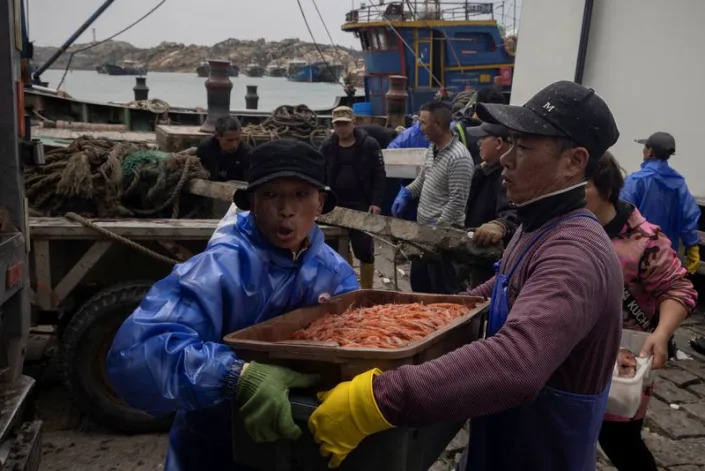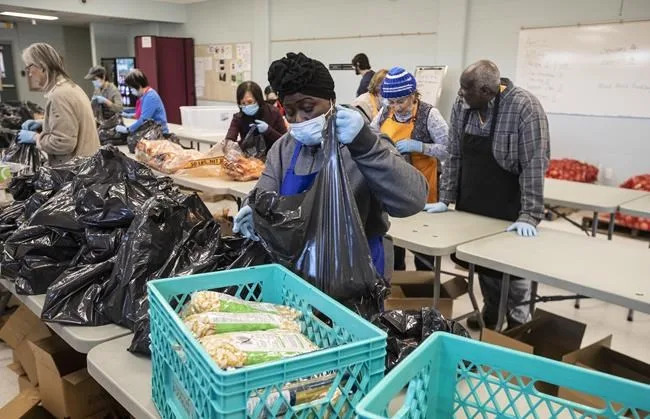Surge in Hindu vigilante mobs who ‘attack and kill’ beef-eating Muslims
Samaan Lateef
Sun, April 9, 2023

Police detain a member of the Hindu nationalist and right-wing federation of cattle protection Bhartiya Gau Raksha Dal shouting slogans for the protection of cows - Noah Seelam/AFP
India is seeing a surge in Hindu vigilante groups violently targeting Muslims for eating beef, with one leader vowing to protect cows “as if they are our daughters and mothers”.
The slaughter of the bovine animals – which are considered holy in Hinduism – is already banned in 20 out of India’s 28 states, and police can make an arrest without a warrant.
Most of the states ruled by India’s Bharatiya Janata Party (BJP) have established vigilante squads made up of government officials and private citizens to implement the ban.
But thousands of informal groups are thought to have sprung up across northern India recently, emboldened by the increasingly anti-Muslim rhetoric of the ruling BJP ahead of elections next year.
There are estimated to be 200 such vigilante militias in the Delhi region alone. They lay ambushes on highways and roads at night, looking for trucks that might be “smuggling” cows across state borders, or patrolling roads into Muslim villages.
“The cow is the symbol of our faith. We will protect the cows like our daughters and mothers,” Davinder Singh, a cow protection activist from Haryana, a BJP-ruled state, told The Telegraph.
A nationwide ban on cow slaughter is among the promises that have been made by Narendra Modi, the prime minister and BJP leader, to court voters ahead of 2024’s elections.
“Obviously people of India will stand with him on this,” said Dharmendra Manesar, a former member of a vigilante squad.

Woman in India feeds a bull - Alamy Stock Photo
In the meantime, civilians are taking matters into their own hands.
Last week, Mr Singh’s team detained two Muslim youths from Haryana’s Noah village and took them to the police for carrying cows.
“In the past two months, I must have handed over nearly 300 Muslim youth to police and rescued over 500 cows from them,” he said.
In the last five years, nearly 2,000 people have been accused of crimes related to the mistreatment of cows.
A lawyer told The Telegraph that many of his clients have paid huge sums of money to these vigilantes just to get their cases dropped in court.
It doesn’t always end so peacefully, however.
Just last month, two young Muslim men were abducted by Hindu vigilantes and burned to death in Haryana.
Mr Singh said he was not involved but understood why it had happened: “Cow slaughter should be banned across the country because there will obviously be a violent reaction to it from Hindus.”
Muslims ‘deprived of dignity’
More than 50 people are estimated to have been killed in similar cases across the country since 2015. The majority are Muslims or people from other minority groups.
These sorts of crimes are usually ignored or covered up by authorities amid an increasingly febrile atmosphere fuelled by the Hindu nationalist government.
“Hate speech by ruling BJP leaders and ideological affiliates has invited violence against Muslims in India – including over allegations of slaughtering cows – as part of their political campaign,” said Meenakshi Ganguly, the South Asia director at Human Rights Watch.
“In the grand scheme of things, this is one of the tools in their long list as to ways in which Muslims are deprived of economic wellbeing, dignity and equal rights as a citizen of this country,” added Syed Umar Aman, an independent research scholar of India’s political history.
“The calls for cow protection in India, which may have initially been made to attract Hindu votes, have now turned into an excuse for mobs to attack and kill members of minority groups violently.”











